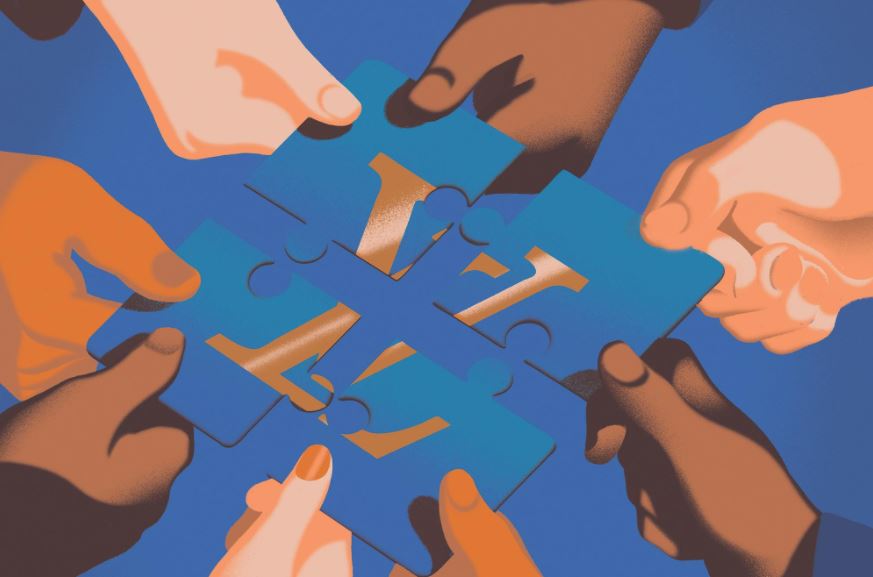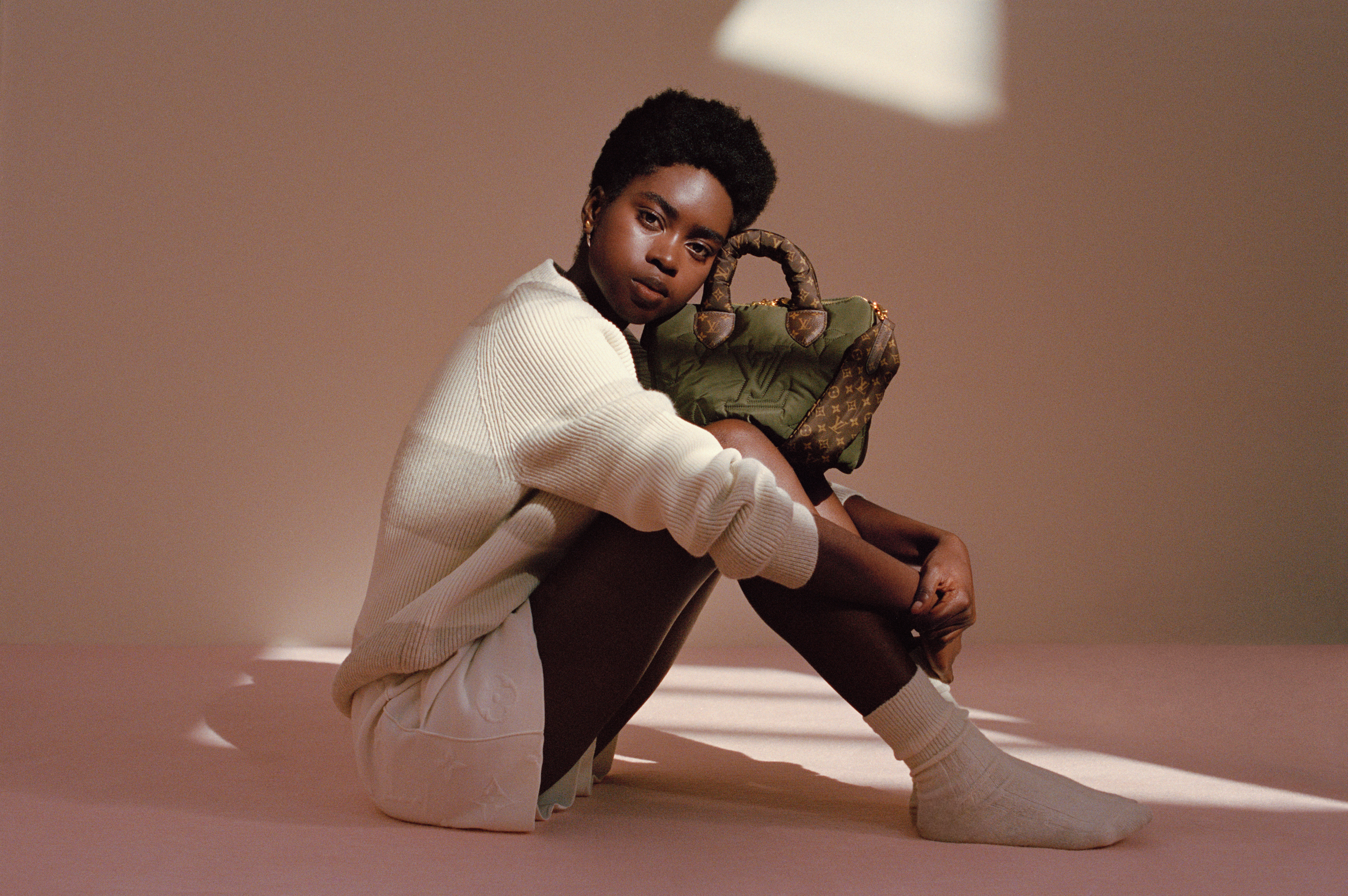Over the past decade, sustainability has become more apparent as a global issue, with the climate crisis causing governments, communities and individuals to reassess their impact on the world. As part of their sustainability agenda, luxury fashion house Louis Vuitton is committed in its quest for a sustainable future.

Louis Vuitton has been a pioneer in the digital luxury fashion industry. The brand is now full steam ahead with its commitment to sustainability. The label recently announced it is committed to reaching 100 per cent of its sustainability goals by 2025.
With many goals already in progress, the luxury fashion house is reusing and recycling 93 per cent of materials from its windows and events. 69 per cent renewable energy is used for its logistics and workshops; 52 per cent of its raw materials are sustainable and certified. 32 per cent of store networks are using LED lighting, and 33 per cent of all its product categories have eco-design processes and life-cycle assessments. It’s all part of their sustainable future, that Vuitton calls a “committed journey.”
Michael Burke, Vuitton’s Chairman and Chief Executive Officer believes great design, sustainability and good business go hand in hand and is the foundation for the company’s sustainability plan.
Pioneering Initiatives
In 2012, the LVMH Group started LVMH’s Initiatives for The Environment (LIFE). It aims to accelerate environmental processes across the entire value chain. With Stella McCartney now a minor stakeholder in the group and acting as an advisor in their sustainability goals, they have already achieved this goal. The label is positioning itself well ahead of their game. Their primary focus is on providing tangible elements in environmental performance and pioneering biodiversity initiatives. Their ambitions in the circular economy, products’ eco-design, and energy consumption are second to none in the fashion world.
In another recent statement, Burke said, “If we want to make durable, lasting, impactful change, we have to have agreed-upon ways of measuring it, or else progress will not be made, and we’ll just be stuck in PR statements. The industry has to go beyond PR statements, and get down and start doing the tedious, yearlong efforts that are required.”
Burke also stated, “This is not something that we’re just starting, but we’re starting to communicate about it because we have facts, and we have enough experience to make committed statements and goals. All of these efforts have to be global and mutualised and a single player will not move the needle.”
Vuitton has also included climate objectives for 2030. Their target is a 55 per cent reduction in greenhouse gas emissions. These targets have been validated by the Science Based Targets initiative, a partnership between CDP, the United Nations Global Compact, World Wide Fund for Nature and World Resources Institute. In an unprecedented move, the fashion house has cemented its commitment to responsible sourcing and circular creativity.
Eco-sourcing

Vuitton is already using sustainable raw materials. 60 per cent of wool, 67 per cent of cotton, 78 per cent of leather and 91 per cent of gold are certified to the highest environmental standards, according to the company. However, sourcing sustainable raw materials have not come without its challenges. Accessing certified raw materials, along with overtaxed delivery companies and backlogged ports, are just a few of the complications since COVID began. Other problems include companies not being able to produce enough material to keep up with the rapid increase in supply and demand.
Burke also stated. “It’s a very, very complicated and fragile ecosystem. Any disruption creates total havoc in everyone’s business, not just sustainability. That shows we have to work in a very cooperative manner to modify the supply chain.”
Recently, Vuitton has become more conservative in its production process, becoming more flexible and agile across all its processes. Until recently, they produced 50,000 to 100,000 units with the hope of selling out. But today, they have had to produce smaller quantities, increasing units when there is a demand in production.
For Vuitton, sustainability has always been embedded into their philosophy but it has not always been publicised. However, due to the rapid change in people’s mindset and becoming more climate-conscious, they have seen an increase in repair requests. Today, individuals are more focused on extending the life of their luxury goods. This has resulted in Vuitton fixing about half a million bags a year. It now has 11 workshops worldwide to keep up with the demand from its clients. They have also created an Upcycling Signal Logo to indicate the items that are upcycled or contain at least 50 per cent recycled or bio-based materials.
An Environmental Revolution
For Louis Vuitton, the luxury ethos has always been tied to sustainability. It goes hand-in-hand with the quality of the product and their brand. In the wake of the environmental revolution, individuals seem to be more willing to spend more to own sustainable products. Whether we are seeing a trend where individuals want to buy with a cleaner conscience and feel less guilty about their extravagant spending, or those who genuinely want change, is a grey area.
In 2020, a study conducted by Altiant and their annual Sustainable Luxury Brand Index highlighted women and those who were under-40 were willing to spend a premium for sustainable luxury goods. This indicated a widespread willingness to spend more for sustainable goods. But also showed consumers scrutinising brands that make such claims.
The pandemic has accelerated the focus on sustainability, leading to significant shifts in lifestyle. We are seeing the rise of upcycling, rentals and the re-use of fashion, indicating the shift in consumer behaviour. The adoption of the circular economy principles has resonated with many luxury brands. And it’s now their responsibility to embrace sustainability moving full steam ahead to achieve sustainable goals.
For luxury brands, like Vuitton, communicating about sustainability is an ongoing challenge. Claims are not always received as authentic and intended. Brands must be committed to going above and beyond to exceed the growing standards expected by the luxury consumer. This can be done by investing in sustainable processes, circular design and extending the life of their products.
Subscribe to FIB’s Weekly Breaking News Report for your weekly dose of music, fashion and pop culture news!






